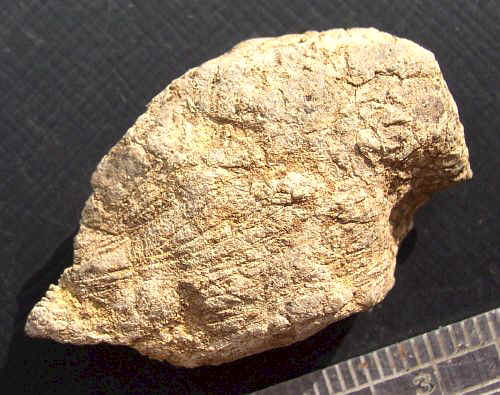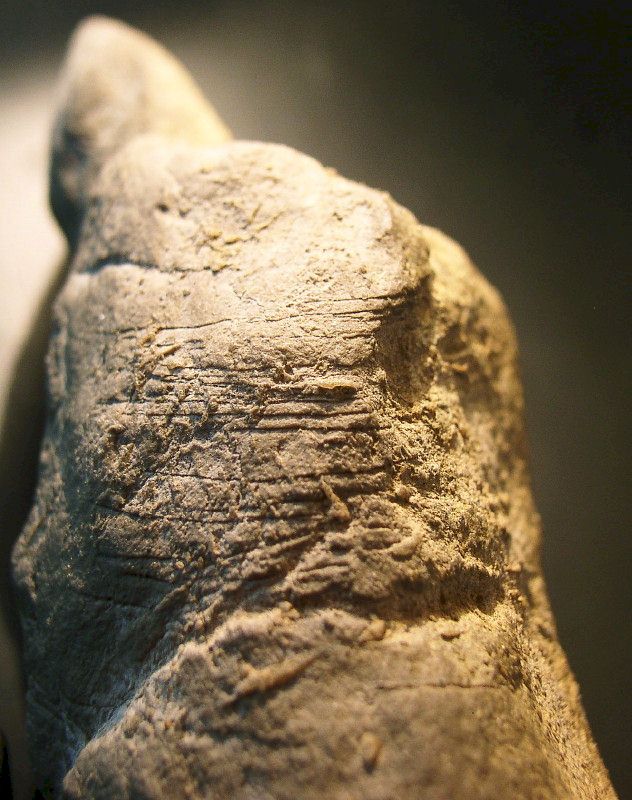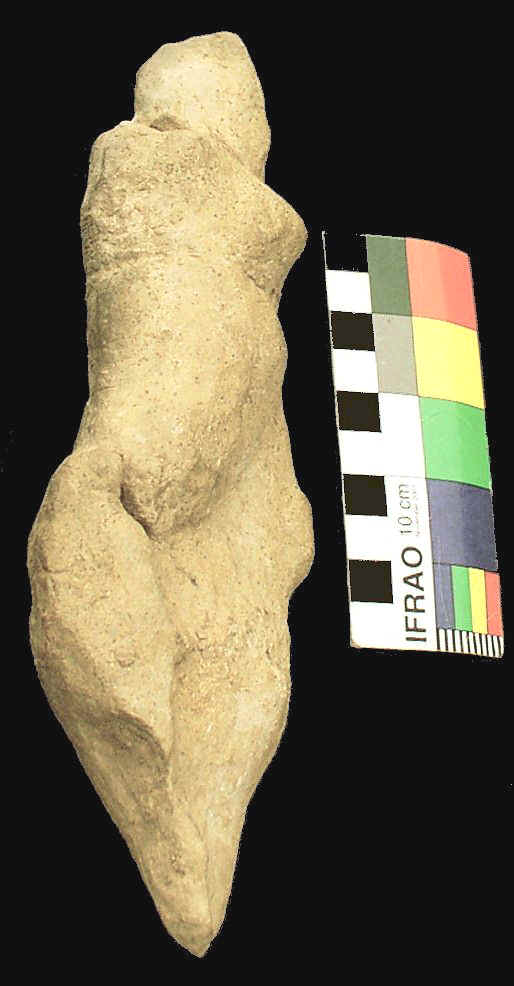|
Incised
Stones at 33GU218
| Incision marks, cut with a hard
sharp-edged stone and V-profile in cross-section, are an
increasingly recognized hallmark of human agency in artifacts
worldwide, found on artifacts dating from the Lower Paleolithic
to as recently as the Late Archaic Period in North
America. Prior to their recognition here at 33GU218 they
were observed (not for the first time) and described at the Gault
Site in Texas. |
| This limestone bird figure from
33GU218 with a
quasi-anthropomorphic face displays the distinctive V-profile incision marks characteristic of many artifacts at
the site. Dr. Roy
Mapes, professor of geology at Ohio University, and Dr.
Eric Law, professor of geology at Muskingum University, have identified
the deep and curved cuts in this stone as artificial.
This is also one of several pieces microscopically examined by rock art
expert Dr. Arsen
Faradzhev during a site visit in April 2005 and determined to be
the product of human workmanship. |
|
Below, a close-up of
the incisions: |
_________
|

|
|
Another incised
limestone. |
_________
|

|
|
An incised
limestone bird figure. |
_________
|


|
|
Incision marks
(left photo) on a limestone "Venus" figure.
|
|
|
_________
| This bird-human figure in
sandstone includes a finely carved/ground flying bird image, shown in
close-up below: |
_________
|
A limestone with almost
perpendicularly incised lines, shown refitted into the larger rock from which it was cut.
Compare this to the similarly shaped and incised Clovis-age
limestone from the Gault site,
below: |
_________
|
Three photos
above:
Incised limestone bird figure. |
_________
_________
_________
|
Broader V-profile
marks, figurative carvings on flat sandstone.
|
|
Top
of Page
| Click your browser's
"Back" button to return to the point from
which you entered this page. |
HOME

|
|